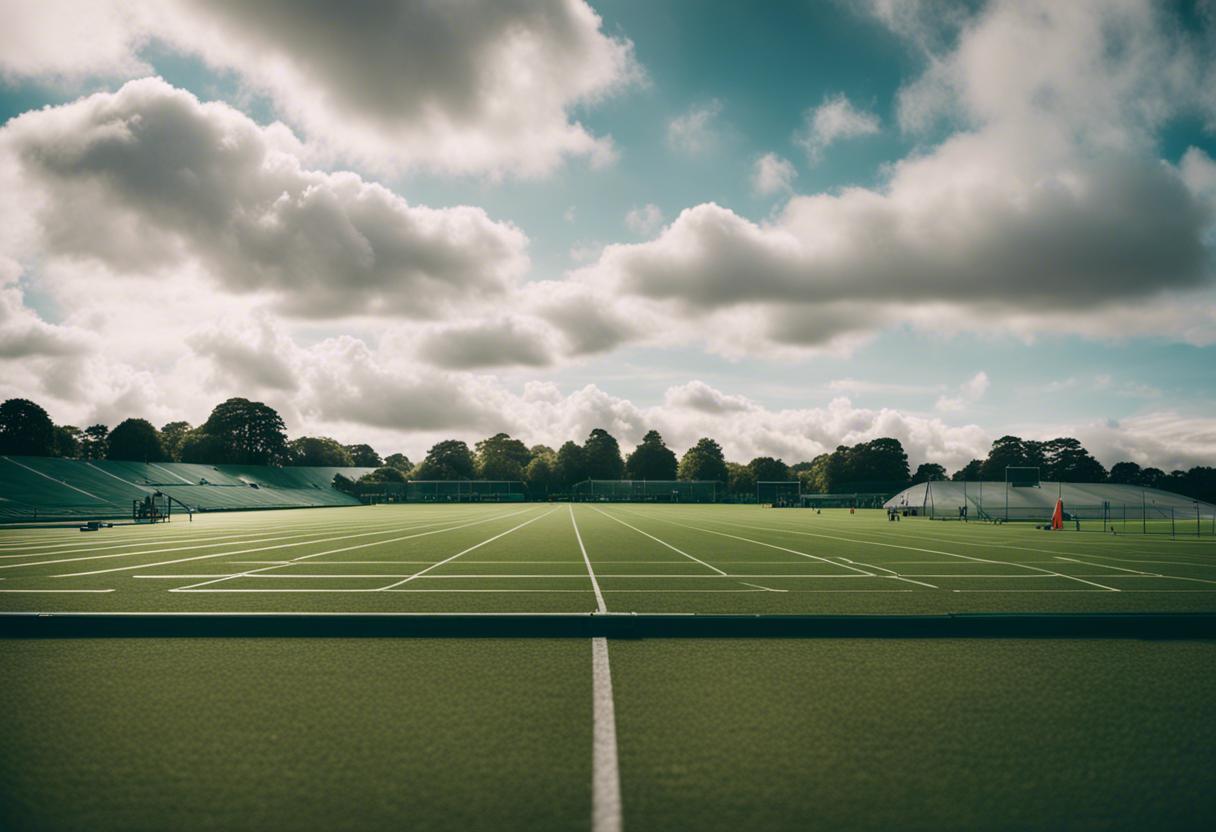In his last comments to me before departing for Lima in Peru, Irish javelin thrower Oisín Joyce revealed he intended to focus solely on reaching the final stage rather than fantasising about what may lay beyond this. Little did we realise that this was not humility or merely a superficial goal, rather he held a confident conviction in his own javelin-throwing prowess.
He optimistically reasoned that securing a place in the World Under-20 championships final might not make him superior to all his competitors, yet it would confirm he was equal to them. This attitude seems characteristic of the rising wave of Irish athletes.
Thursday evening in Lima saw this prediction validated. Despite entering the javelin final as ninth out of twelve qualifiers, Joyce made an impressive opening throw of 73.89m, adding 17cm to his own existing Irish under-20 record. This remarkable effort momentarily put him ahead of the pack.
However, Joyce’s lead was quickly rivaled in the second round by Xiaobo Wang from China, a noted thrower exceeding the 80m mark. Nevertheless, Joyce maintained his position for the silver medal till the final round with his ultimate throw measuring 71.32m. The suspense grew as he could only stand by and watch. But the tides changed as Tom Tersek from Slovenia, also known to throw over 80m, took the gold with an extraordinary final throw of 76.81m. Still, Joyce proudly claimed a spot on the podium.
Joyce’s victory marked a momentous occasion as no Irish individual had ever taken a podium position in the 38-year history of the World Under-20 championships. He found himself amongst esteemed names of only four previous silver medalists. These include high jumper Antoine Burke (1994), Ciara Mageean in the 1,500m (2010), high jumper Sommer Lecky (2018), and the women’s 4x100m relay team (Molly Scott, Ciara Neville, Gina Akpe-Moses, Patience Jumbo-Gula, and Rhasidat Adeleke) also from 2018.
Just a day prior to the groundbreaking feat of Joyce, Elizabeth Ndudi battled a back injury to secure the sixth position in the long jump. She fell just short of winning the bronze medal although she hadn’t been able to prepare for days leading up to the event. Despite her admirable performance of 6.18m, it fell significantly short of her own Irish adult record of 6.68m, made in April, whilst competing for her American university in Illinois; a distance which would have secured her first place in Lima.
Elizabeth Ndudi, last year, became the first-ever Irish competitor to triumph in a field event at the European U-20 Championships, a history that spans 53 years. She claimed the long jump title at the age of just 18 in Jerusalem, thereby sharply reigniting interest and rejuvenating Irish athletics field events in a timely manner.
Following the failure to qualify for any field event in the Tokyo Olympics, two Irish athletes made it to Paris: Nicola Tuthill, the 20-year-old hammer thrower, and Eric Favors, shot putter. Additionally, Kate O’Connor, who is still only 23, became the country’s first female Olympic multi-event qualifier and managed to secure the commendable 14th place in the heptathlon.
Another significant achievement in Irish field event history happened in July when Thomas Williams, only 16, brought home the gold in the hammer throw with a best of 73.95m, from the European U-18 Athletics Championships in Banska Bystrica, Slovakia. This victory was his first gold in a field event, making it the third such victory in history after Adeleke’s victory in the 200m in 2018 and Sarah Healy’s 800m-1,500m double win at the same event.
Williams’ victory came on the heels of a bronze medal victory by Cian Crampton in the men’s discus, the 17 year old lad from Edenderry, Co Offaly, who managed to break the Irish under-18 record with 60.55m.
The recent achievement of Joyce in Lima also acts as an effective prompter that necessity and indigenous creativity reign supreme, regardless of discussions regarding the requirement for enhanced facilities and specialised coaching. Joyce’s advancement in the javelin has been completely self-cultivated. He started participating in the event at the tender age of nine, merely for amusement, after he joined Lake District AC, a small youthful club in Ballinrobe that was established just over a decade ago.
Joyce, a promising young athlete, acknowledges the significant influence of his non-athletic parents, Pádraic and Pauline on his coaching team. Initially, they used to practice on the rugby pitch in Ballinrobe until the club constructed its own adjacent 200m track during the pandemic. This track has since been his and his club mates’ primary base for practicing throws. However, for comprehensive throwing and running sessions, he has to travel to the full-sized tracks in Claremorris or Dangan in Galway. Nonetheless, this has never deterred his pursuit for success.
In June, Joyce first broke the Irish under-20 record by throwing a staggering 73.72m, leading to his victory at the Mannheim International meeting in Germany. Even then, he had already earned a reputation as one of the upcoming star throwers of the nation. During the previous summer, at only 18, he clinched his first Irish senior javelin title and ended up in sixth place at the European Under-20 Championships. Consequently, he chose to abandon Gaelic football.
In recent years, the consistent lack of field event successes among Irish athletes has been perplexing. Joyce, who considers himself a true student of javelin, aligns effortlessly with the new breed of Irish athletes eager to become prominent outside the typical running events.
In recent summers, he has had a few meetings with Terry McHugh, who, with his 82.75m throw in 2000, still maintains the Irish senior record and has won 21 successive Irish javelin titles between 1984 and 2004.
Responding to McHugh’s record, Joyce modestly concedes that it sets a lofty benchmark, yet remains resolute in his aspiration to someday surpass it.

